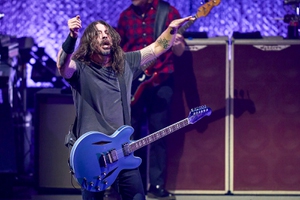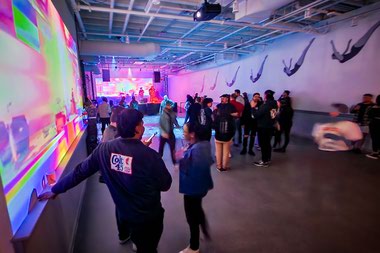How is June album Damage different from previous records? Going into Damage, with the way the songs were, we really wanted it to sound very natural, and we wanted to put the emphasis on the performance of the songs. We used tape for the first time in a while. I think we just wanted to have a more warm sound and more of a live sound.
Did you do any group recording with multiple instruments? Yeah, we tracked a lot of our songs together, and we also did some group vocal stuff. Jim [Adkins] did a track where he recorded the guitar and the vocals at the same time. Stuff like that, stuff we hadn’t done all that much before that was different and I think gave the album a different feel.
Why did you title the record Damage? “Damage” was one of the song titles, and it’s a song that encapsulates the vibe of the record. Also, we wanted there to be a contrast between the name of the record and the look of the record. The album is titled Damage, but the album artwork is very clean and nice and formal.
You mentioned the album having an overall “vibe.” What would you say that is? I don’t hear an overly melancholy or dark tone. I think, lyrically, a lot of the songs deal with the various stages of falling apart, so some of the lyrical content is dark and depressing. It sort of works for the record to have a natural, live, vulnerable feeling to it without using a lot of studio tools and tricks.
The drums sound much more alive than they did on 2007’s Chase This Light—more like the days of 1999’s Clarity and 1996’s Static Prevails. I think you’re right. We had Chris Lord-Alge mix Chase This Light, and he makes it sound really good and exciting, but it’s sort of treated with a heavy hand. It was definitely a different approach. So on this record it was very much what-you-hear-is-what-I-played. There’s no samples, there’s nothing helping out. It is what it is, just me playing in a room, and the same thing goes for everyone else. There’s no Auto-Tune on the vocals or effect like that.
And we didn’t do it just to say we didn’t do it; it was more an approach to make it sound a certain way. And also, it was a way to challenge ourselves—to make a record and to leave all the modern conveniences of being in a studio behind and do it in a way that requires more of you.
When you’ve had success and you lose the “necessity” element—the drive to support yourselves—what continues to motivates you, and do you lose anything when you don’t have that desperation? I don’t think the desperation of making it really motivated us that much, and I don’t think it really factored into the creative process. Now we’re older, and I think we have different tendencies than when we were 19 or 21 or 23. We like to pursue sounds and songs that interest us in the moment. We feel like it’d be boring to go back and try to recreate something or recapture a mood that’s already past. It’s not really staying true to who you are at the present time, and it’s not really a productive way of being creative.
You’ve worked with some of the biggest producers in music: Mark Trombino, Butch Vig, Gil Norton. What have you learned from them? Mark taught me a lot about drum sounds, drum tuning and an overall approach to things, rhythmical ways of doing things. I think Gil is really good with song arrangements; he’s very good at keeping arrangements exciting and interesting throughout. With Butch, we weren’t really with him every day—he was sort of an executive producer and was not really around all that much. I think we would have really learned a lot more from Butch had we been in a room with him every day. But he certainly helped us a lot, and we sort of used him as our way to determine if we were on the right track or not on certain things.
Jimmy Eat World With Matt Pond. September 25, 7 p.m., $26-$30. House of Blues, 632-7600.





